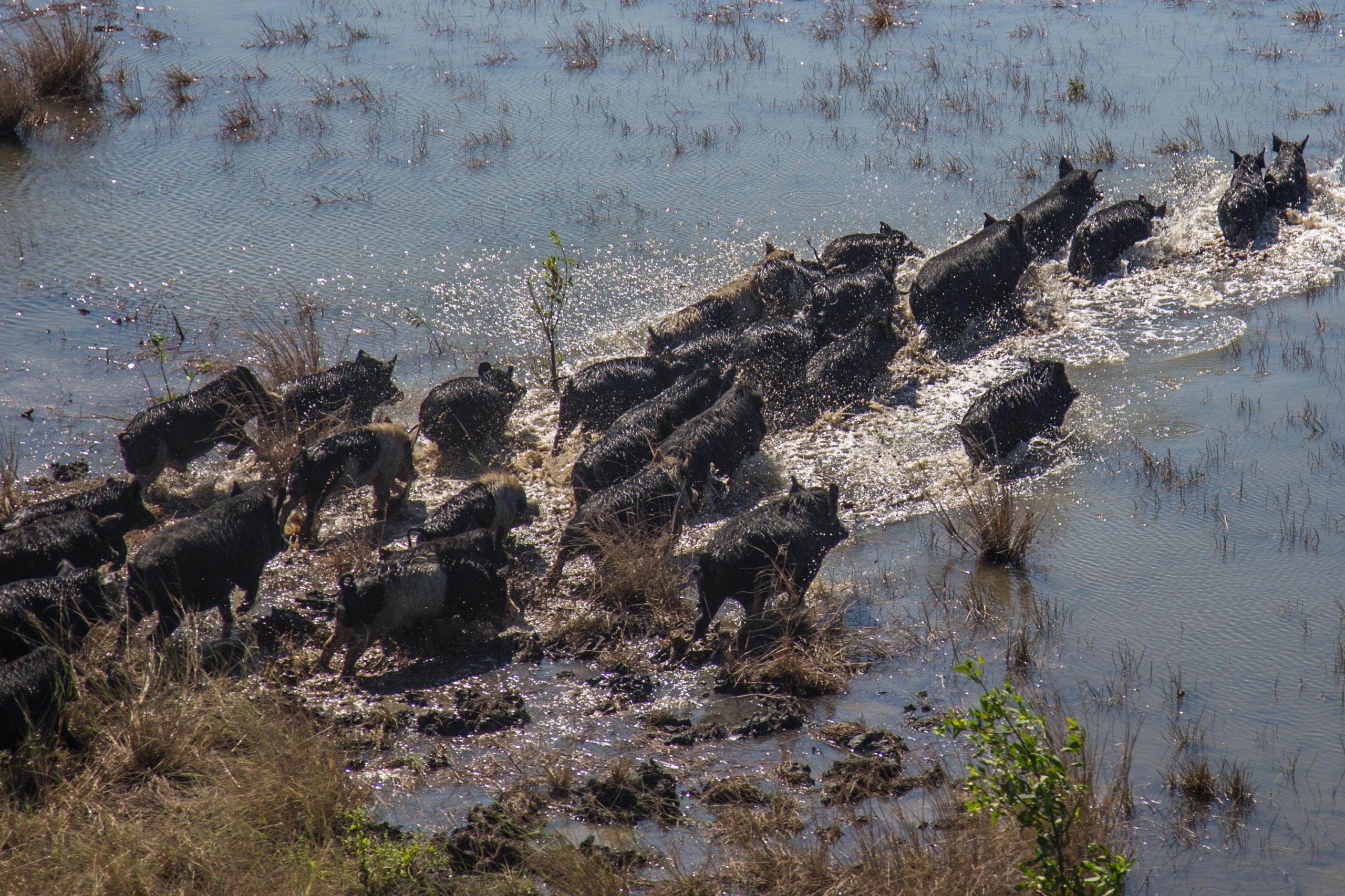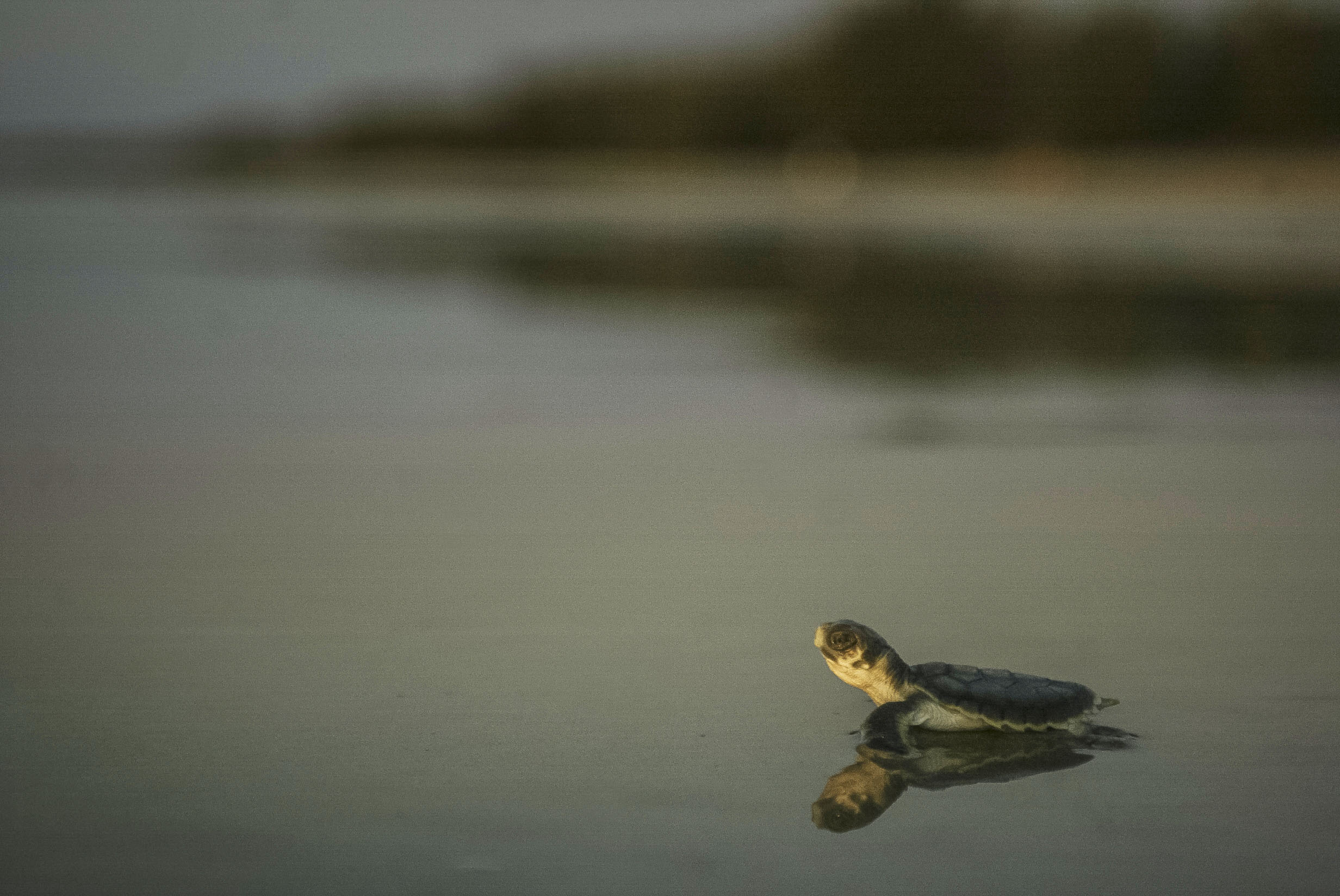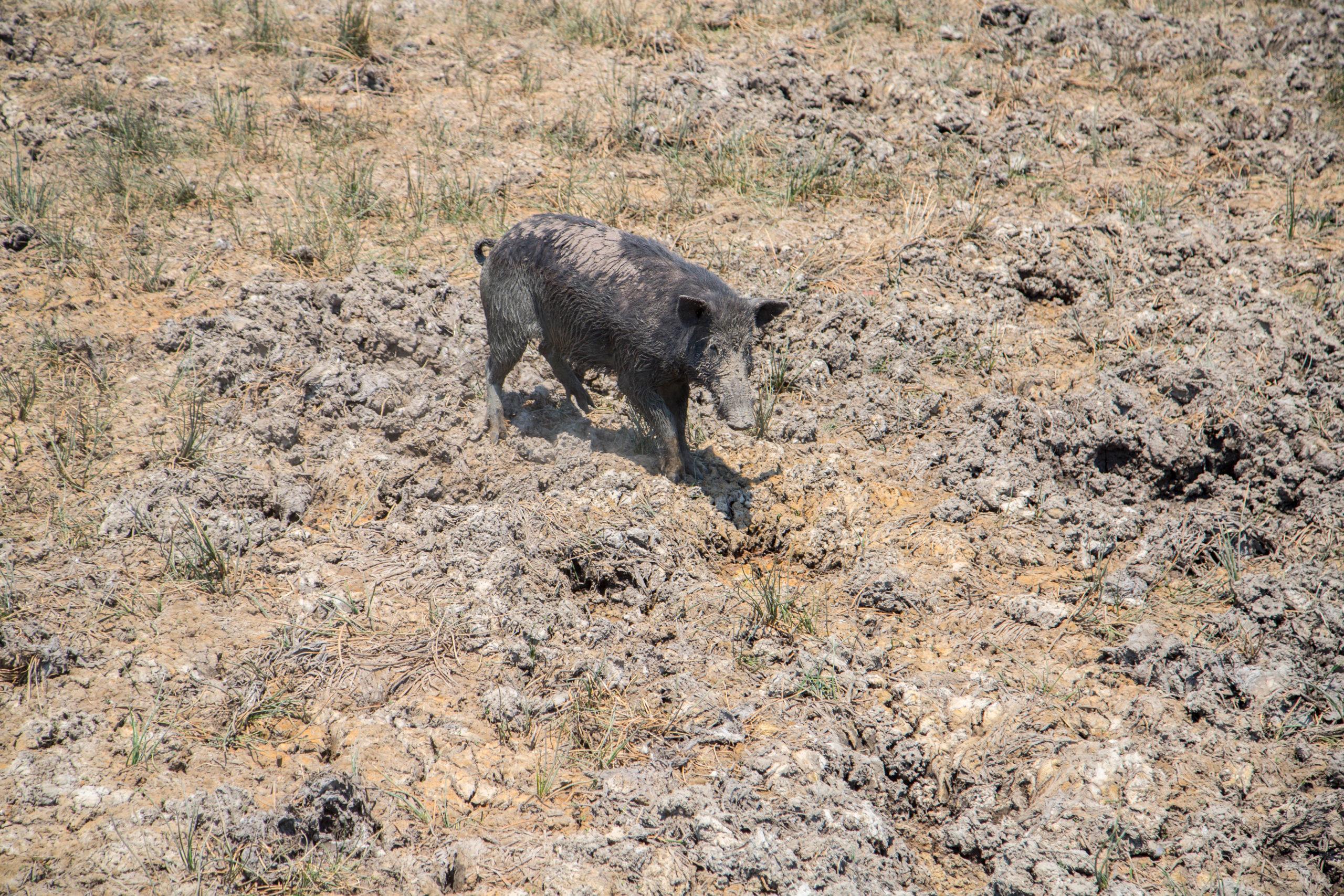Feral pigs were destroying critical habitats in the Southern Wik homelands on Cape York Peninsula.
They turned clear-water lagoons into muddy bogs as they churned the soil searching for food. They fouled waterholes. And, of most concern to Wik Traditional Owners, they ate every single egg they uncovered from the marine turtle nests on the west coast’s beaches.

Feral pigs running through a wetland and turning it into a muddy bog. Photo by Michael Lawrence-Taylor.
Banner photo: Feral pigs can cause substantial damage to important wetlands in northern Australia. Photo by Michael Lawrence-Taylor.
Aak Puul Ngantam (APN) rangers had been controlling pigs by aerial culling, on-ground shooting, baiting and trapping. However, there had been no systematic monitoring of how effective each activity was and, as a small organisation working in a remote and challenging landscape, they wanted to ensure that their efforts were protecting the species and places most valued by their community.
It was very important for APN to have a proactive partner who felt the same way about managing the environment, but who also understood what the Traditional Owners really wanted.
– Mr Sandy Whyte, general manager of APN
APN invited CSIRO’s Dr Justin Perry to help them fill their knowledge gaps on the effectiveness of their pig control. After a long-term relationship working on fire management and biodiversity, new funding under the Australian Government’s National Environmental Science Program allowed them to expand their collaborative research program to questions around feral pig management.
The research partnership has led to a shift in the focus of APN’s pig control towards places that are culturally important to Wik people, rather than simply targeting the areas with the greatest number of pigs.
We weren’t going to be able to solve everything. The research has helped us refine that thought process and our management techniques.
– Mr Sandy Whyte, APN

As well as destroying critical habitats, feral pigs would eat every single turtle egg they could find. Photo by Glenn Campbell.
Now, during peak turtle nesting and hatching periods, the APN Rangers focus their hunting efforts on the small number of pigs that raid turtle nests. Fewer pigs overall may be killed but the conservation and cultural outcomes are more significant.
A central part of increasing APN’s capacity to better protect turtle nests from pigs was developing a data input and analysis system that provided near real-time feedback to the rangers.
Using a specially developed app, the rangers collect data on nest predation and nesting success, which they email to Dr Perry when they return to their base. Dr Perry then analyses the data and reports it back to the rangers using data visualisation tools that map predation statistics for the species that raids turtle nests (feral pigs, dingoes and goannas). The rangers are then able to respond with a management action appropriate for each predator.
One of the real benefits of the research has been giving us the tools to communicate back to Traditional Owners – our internal stakeholders – and then to our external stakeholders such as the different funding bodies and policy development areas.
– Mr Sandy Whyte, APN

Improving understanding of feral pig numbers and distribution across northern Australia is important to the Northern Australian Quarantine Strategy (NAQS) team. Photo by Samantha Setterfield.
The data system has also captured the attention of staff from the federal Department of Climate Change, Energy, the Environment and Water’s Northern Australian Quarantine Strategy (NAQS).
Feral pigs are a biosecurity risk. They can act as reservoirs of diseases such as African swine fever and foot-and-mouth disease that may be transmitted to Australia’s herd of domestic pigs, or rabies and Japanese encephalitis that are a direct risk to humans.
We have a risk-based approach to our surveillance activities. We want to know where pigs are, and where they’re more likely to come in contact with viruses that we don’t want in this country.
– Dr Guy Weerasinghe, NAQS veterinary officer
Yet there is no good estimate of either the total number of pigs in northern Australia or how they are distributed across the landscape. Dr Weerasinghe says that the APN data on pig densities across different habitats and seasons will help NAQS refine their surveillance activities for that region.
The environment of northern Australia varies so much – whether it’s dryness or monsoon activity – and utilising better data will help improve our understanding of feral pigs and their home ranges and in turn, help to improve our understanding of the role they may play with exotic diseases that are at our doorstep.
– Dr Guy Weerasinghe, NAQS veterinary officer
Research outputs
Scientific papers
Factsheets
Project webpages
Attributions


